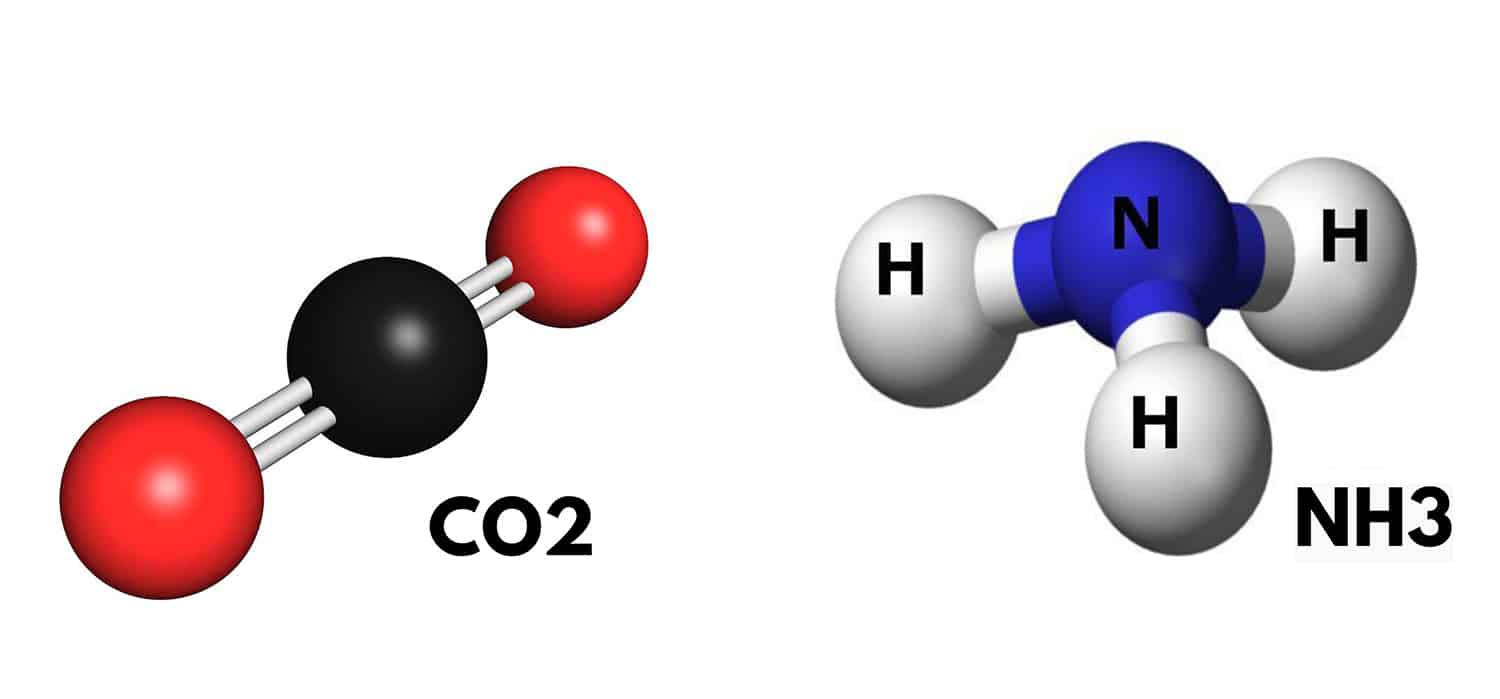CO2 vs Ammonia—Which Refrigerant Is the Best for Your Business?

Natural refrigerants are found to be viable alternative refrigerants when it comes to industrial applications. First, they are energy-efficient due to their thermodynamic properties. Additionally, they offer a lower total cost of ownership than their synthetic counterparts, such as HFCs. More than that, natural refrigerants are safer for the environment since they have little or no global warming potential (GWP) and ozone depletion potential (ODP), making them a good investment for fighting climate change.
When it comes to specific types of natural refrigerants, CO2 and ammonia (NH3) are the two most widely used refrigerants in the industry. Whether for cold storage or food processing applications, CO2 and ammonia continue their rise in popularity. However, each of these refrigerants has unique and distinct characteristics that, depending on business needs, should be taken into account.
CO2 is an abundant natural refrigerant that has 0 ODP and a GWP of 1. It has been used in refrigeration systems since the 1800s and is currently widely applied for commercial and industrial use since synthetic refrigerants are being phased out. It’s non-toxic, non-corrosive, and non-flammable. Though slightly less efficient than ammonia, CO2 works well at lower temperatures, making it a common refrigerant for freezer applications. Likewise, CO2 is efficiently used in cascade systems. In a two-stage, cascade refrigeration system, CO2 is specifically used for the low-temperature stage together with ammonia which is used for the high-temperature stage. When it comes to refrigeration equipment size, CO2 usually comes in a smaller footprint and takes up less physical space since it is a very dense gas.
On the other hand, ammonia is a natural and environmentally friendly refrigerant that has 0 ODP and 0 GWP. Commonly used in ice arenas, ammonia is efficient when it comes to the refrigeration cycle. Its low operating pressure requires only small pipe sizes, and in some installations, no special piping at all. A widely used refrigerant in the industry, ammonia is easy to maintain and operate. And since traditional ammonia systems have been used for more than 100 years, there are more qualified technicians and operators to work with ammonia systems than CO2 systems. While CO2 is commonly used as the refrigerant in facilities with freezer applications since it works so well at low-temperature, ammonia is most commonly used in facilities that have large-scale refrigeration systems, such as food and beverage manufacturing facilities, cold storage warehouses, combined cycle power plants, and petrochemical facilities.
The renewed look at CO2 and ammonia as alternative refrigerants is driven by the imminent phasing out of synthetic refrigerants due to their adverse environmental impacts. Several looming refrigeration regulations putting limits on refrigerant charge and incentivizing compliance are pushing business owners to switch to more environmentally safe alternatives, such as CO2 and ammonia.
When it comes to deciding whether to use CO2 or ammonia in your business, it depends on the specific nature of the application, the type of facility involved, the available budget, and the facility’s existing physical condition. However, choosing either CO2 or ammonia can result in an equally favorable outcome. These two refrigerants, and other natural refrigerants available in the market today, have positive consequential effects, not just on regulatory compliance and protecting the environment, but also on the business’s bottom line. When you choose or switch to natural refrigerants, everybody wins in the end.